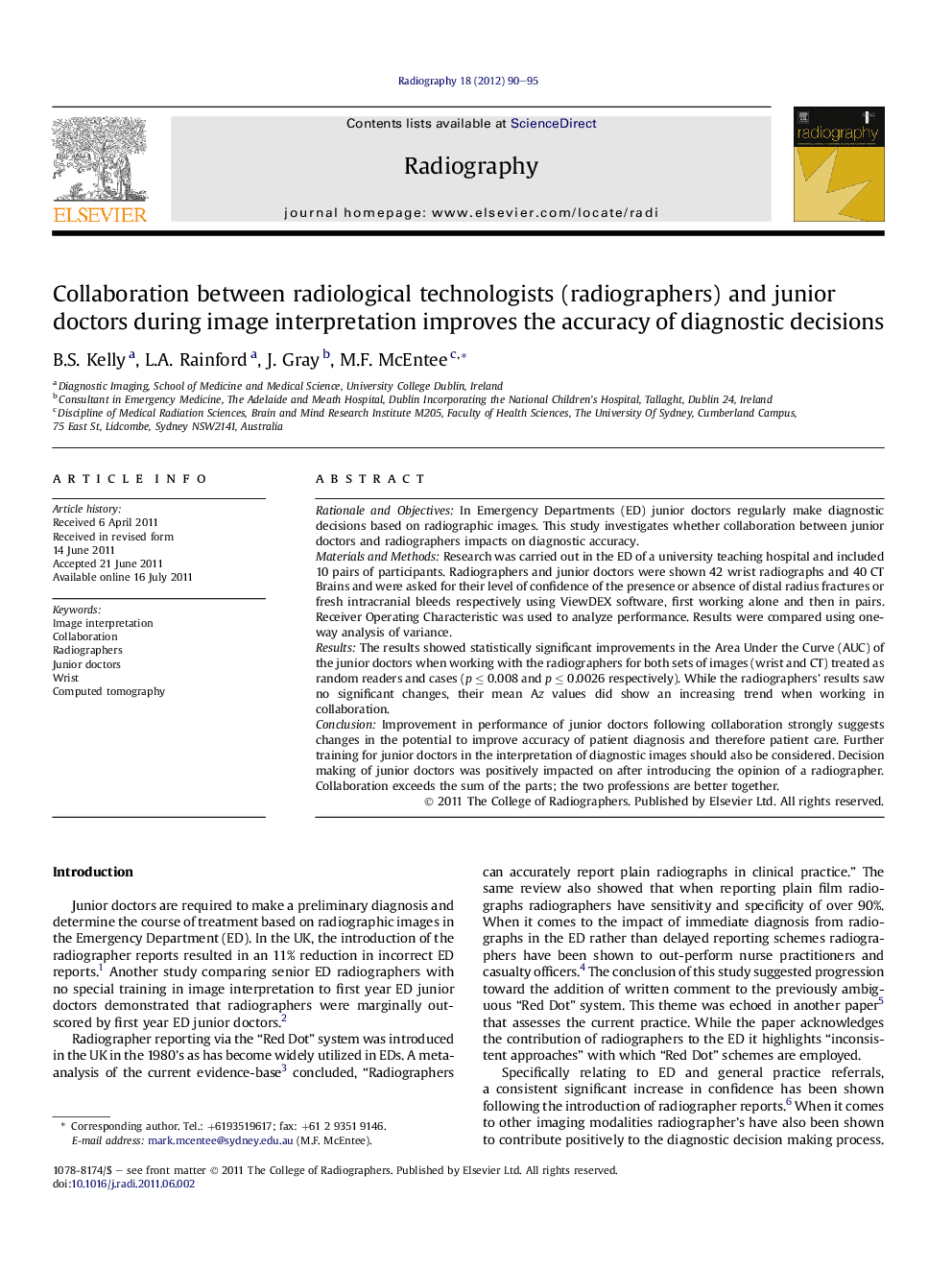| Article ID | Journal | Published Year | Pages | File Type |
|---|---|---|---|---|
| 2737420 | Radiography | 2012 | 6 Pages |
Rationale and ObjectivesIn Emergency Departments (ED) junior doctors regularly make diagnostic decisions based on radiographic images. This study investigates whether collaboration between junior doctors and radiographers impacts on diagnostic accuracy.Materials and MethodsResearch was carried out in the ED of a university teaching hospital and included 10 pairs of participants. Radiographers and junior doctors were shown 42 wrist radiographs and 40 CT Brains and were asked for their level of confidence of the presence or absence of distal radius fractures or fresh intracranial bleeds respectively using ViewDEX software, first working alone and then in pairs. Receiver Operating Characteristic was used to analyze performance. Results were compared using one-way analysis of variance.ResultsThe results showed statistically significant improvements in the Area Under the Curve (AUC) of the junior doctors when working with the radiographers for both sets of images (wrist and CT) treated as random readers and cases (p ≤ 0.008 and p ≤ 0.0026 respectively). While the radiographers’ results saw no significant changes, their mean Az values did show an increasing trend when working in collaboration.ConclusionImprovement in performance of junior doctors following collaboration strongly suggests changes in the potential to improve accuracy of patient diagnosis and therefore patient care. Further training for junior doctors in the interpretation of diagnostic images should also be considered. Decision making of junior doctors was positively impacted on after introducing the opinion of a radiographer. Collaboration exceeds the sum of the parts; the two professions are better together.
